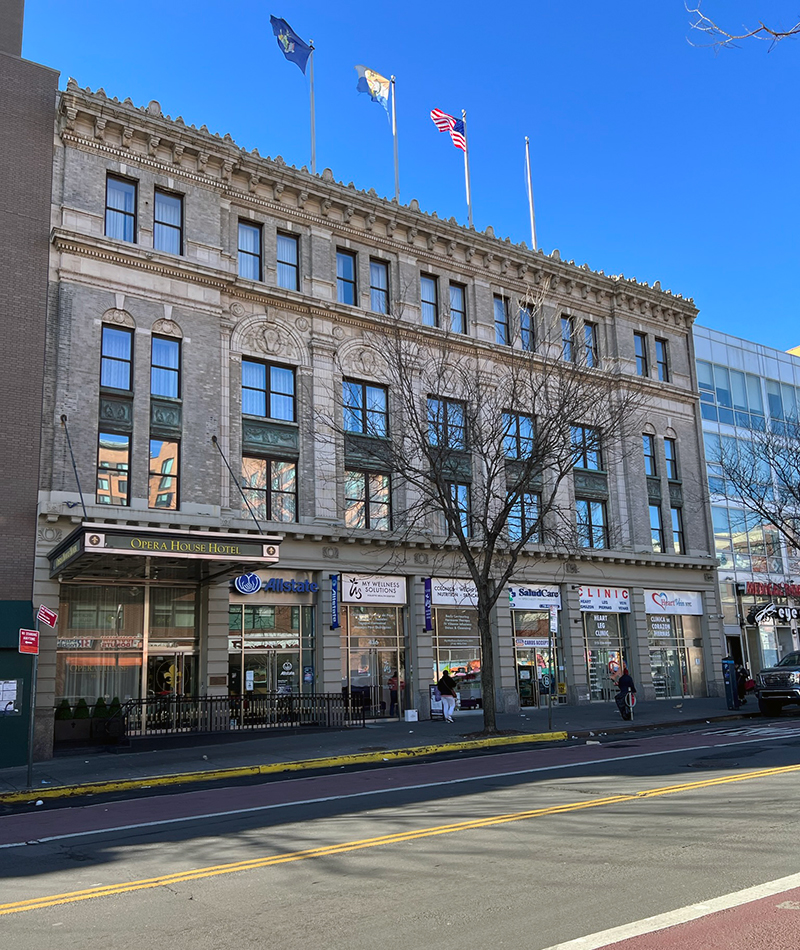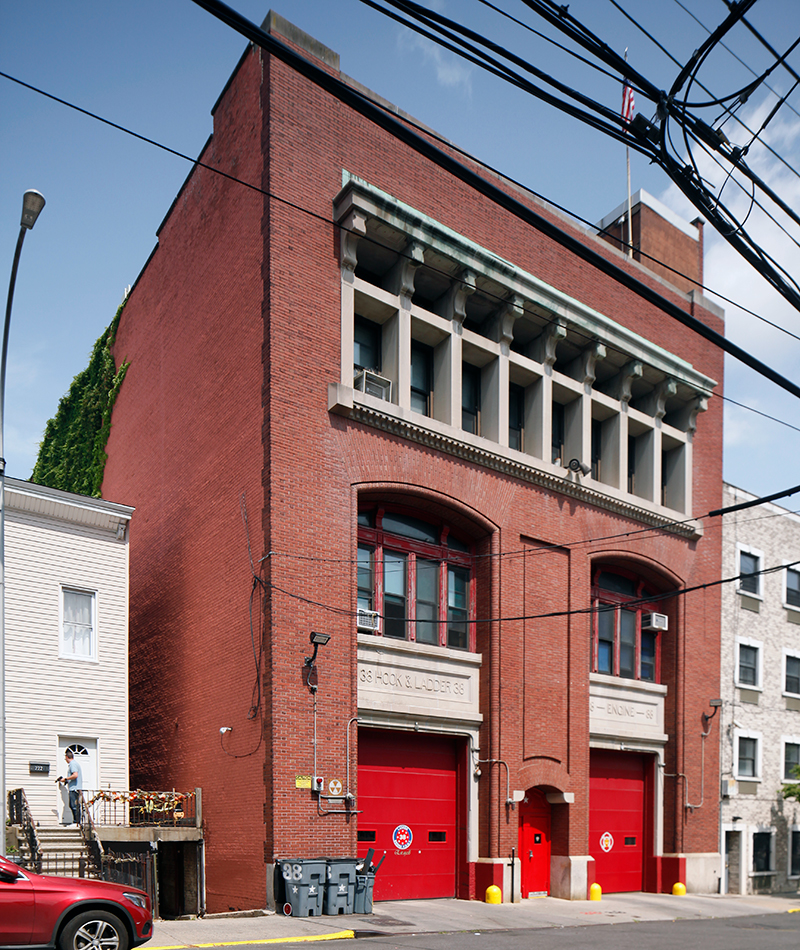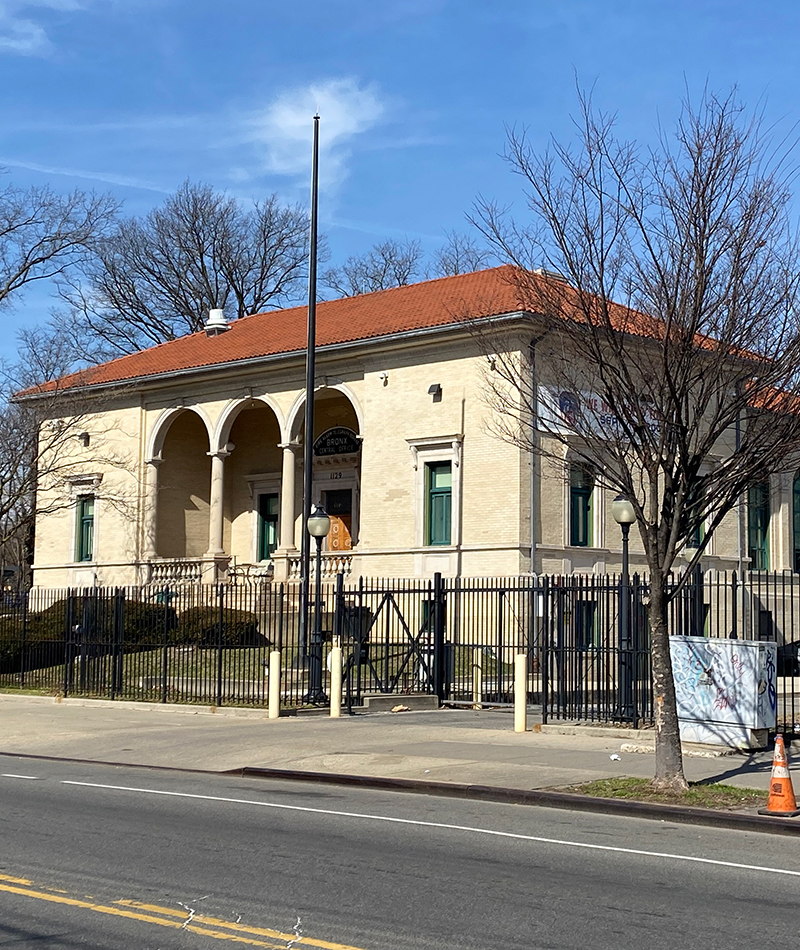
 Landmarks Preservation Commission311
Landmarks Preservation Commission311 Search all NYC.gov websites
Search all NYC.gov websites
Press Release
For Immediate Release: June 13, 2023
Contact: lpcpressoffice@lpc.nyc.gov, 212-669-7938
LPC Designates Three Bronx Sites as Individual Landmarks
Bronx Opera House is a former stop on Broadway's "Subway Circuit" and center for Latino/a music and community
Engine Company 88/Ladder Company 38 Firehouse and Fire Alarm Telegraph Bureau, Bronx Central Office are important reminders of a pivotal early period of growth and development in the Bronx
Today's designations were identified as part of LPC's comprehensive research survey of the Bronx, and reflect the Commission's Equity Framework



New York –Today, the New York City Landmarks Preservation Commission (LPC) voted unanimously to designate three sites in the Bronx as individual landmarks: the Bronx Opera House, Engine Company 88/ Ladder Company 38 Firehouse, and Fire Alarm Telegraph Bureau, Bronx Central Office. All three buildings are architecturally and historically significant; in designating the Bronx Opera House, the Commission cited its cultural significance, as well.
The Bronx Opera House was constructed in 1912-1913 and originally served as a stop on New York's theatrical "Subway Circuit," in which Broadway productions played the outer boroughs before heading out on regional or national tours. The site evolved in the 1950s as a major center of Latino/a culture and an important social gathering place for the rapidly growing Puerto Rican community in the South Bronx, with nightclubs that featured some of the biggest stars of the early Latin music and dance scene. The music produced within the walls of the Bronx Opera House would go on to influence musical culture nationwide.
Engine Company 88/ Ladder Company 38 Firehouse was constructed in 1908 to serve the growing population of the Belmont neighborhood of the Bronx, and to suit the more widely professionalized New York City firefighting force established after the consolidation of the five boroughs in 1898.
Fire Alarm Telegraph Bureau, Bronx Central Office is one of four borough offices constructed after that consolidation, when the Fire Department of New York's (FDNY) Manhattan-based fire alarm telegraph operations were no longer sufficient to handle the entire city's needs. The Fire Alarm Telegraph Bureau established offices in each borough, placing the buildings on large open lots within city-owned parks to avoid hazards that might impact communication. The southeastern corner of Bronx Park was chosen as the site of the Bronx Central Office and construction completed in 1915.
"As we designate these three sites as individual landmarks, we celebrate the rich history and cultural significance they hold for the Bronx and all of New York City," said New York City Mayor Eric Adams. "Bronx Opera House, Engine Company 88/Ladder Company 38 Firehouse, and Fire Alarm Telegraph Bureau, Bronx Central Office, are not just buildings, but living testaments to our past, reflecting a time of change, innovation, and the vibrant heritage of the borough. Today's designations ensure these important chapters in the Bronx's history are always remembered and the diverse communities that have contributed to our city's growth and identity are forever honored."
"These historic buildings tell the story of a time of transition and reinvention for both the Bronx and New York City as a whole, and reflect the Commission's ongoing commitment to ensuring that designations reflect the rich heritage of every borough." said Landmarks Preservation Commission Chair Sarah Carroll. "I'm grateful to the FDNY for their partnership in commemorating Engine Company 88/Ladder Company 38 Firehouse and Fire Alarm Telegraph Bureau, Bronx Central Office, and thrilled that the Commission is honoring the Bronx Opera House for its important role in the larger narrative of the Latino/a community here."
"The FDNY is pleased to work with New York City Landmarks and Preservation on landmarking these two locations, as they have and continue to serve a vital role to our City and the Bronx community" said New York City Fire Commissioner Laura Kavanagh. "Engine Company 88/Ladder Company 38 is celebrating 115 years of service to the Belmont section of the Bronx. Coupled with the Bronx Communications Office, with over 90 years of FDNY communications, both locations provide the infrastructure for the Bronx response. With these landmark designations, residents will continue to receive crucial emergency services in the Bronx."
"The Bronx Opera House holds unspeakable amounts of history and cultural relevance to the East Harlem and South Bronx community" said New York City Council Deputy Speaker Diana Ayala. "Thank you to the Landmarks Preservation Commission for designating the Bronx Opera House as a historical landmark. The building itself is part of the Latino American story here in New York City and its preservation is a reminder to all of us of the contributions made by Latino Americans throughout our City's history."
"We are immensely proud of the sensitive rehabilitation of the Bronx Opera House," said Bronx Opera House Hotel General Manager Emilio Morales. "When we converted the building to a boutique hotel, we were inspired by the discovery of 1912 playbills and posters and other historical documentation on site, and carefully restored the façade, including extensive cleaning, recreation of historic features, and installation of new windows and lighting."
The Bronx Opera House was designed by prominent theater architect George Keister, whose work includes two other individually designated New York City landmarks: the Belasco's Stuyvesant Theatre and the Apollo Theater. During its early years, the Bronx Opera House played host to such early Broadway stars as the Barrymores.
From the 1950s through the 1970s, the Bronx Opera House became known for its series of nightclubs and well-known performers like Tito Rodriguez and Johnny Pacheco. Charlie Palmieri and his brother Eddie Palmieri recorded their 1961 album here, entitled "Pachanga at Club Caravana," later credited as helping launch the Pachanga dance craze. For several decades, the Bronx Opera continued to serve the growing South Bronx's Latino/a community with dances and concerts.
The Bronx Opera house was designed in the Italian Renaissance Revival style, and its striking palazzo-type tripartite front facade remains remarkably intact and prominent today in the busy "Hub" of 149th Street. The building is currently in use as a hotel and has been preserved with only minimal changes.
The two FDNY sites designated today are also still in use and remarkably intact. Engine Company 88/ Ladder Company 38 Firehouse was completed just ahead of the adoption of the standardized Model Fire House Plan in 1910 and is unique in its design – the lone example of a firehouse from the firm of Herts & Tallant, Broadway theater designers who became well-known advocates for fireproof building design. The building reflects the advances in firefighting technology of the time, designed to accommodate both horses and the more complex, mechanized firefighting equipment that began to be utilized around the turn of the century. The building is an impressive example of early 20th century civic architecture and is adorned with Prairie-style elements, including deeply set windows and a grand corbeled limestone window enframement and decorative brickwork executed in both standard and Roman brick.
The Fire Alarm Telegraph Bureau, Bronx Central Office was designed by the notable Brooklyn architect Frank J. Helmle and dedicated in 1923. Clad in light brick and topped by a deep, terra-cotta cornice and hipped roof covered in Spanish tiles, its intact and highly refined Italian Renaissance Revival-style design and prominent siting at the southern edge of Bronx Park lend to its striking presence. The building continues to play an important role as part of the FDNY's communications system.
LPC's work is guided by its Equity Framework to ensure diversity and inclusion in designations. All three sites were identified as part of a comprehensive borough-wide survey update of the Bronx conducted last year by a dedicated LPC research team. Today's designations are a direct outcome of that survey effort, along with the recently designated Samuel Gompers Industrial High School, as the agency continues to prioritize and advance designations in areas less well represented by landmarks.
Images
Photographs of the sites are available:
- Bronx Opera House
- Engine Company 88/ Ladder Company 38 Firehouse
- Fire Alarm Telegraph Bureau, Bronx Central Office
About the Landmarks Preservation Commission (LPC)
The Landmarks Preservation Commission is the mayoral agency responsible for protecting and preserving New York City's architecturally, historically, and culturally significant buildings and sites. Since its creation in 1965, LPC has granted landmark status to more than 37,900 buildings and sites, including 1,454 individual landmarks, 121 interior landmarks, 11 scenic landmarks, and 156 historic districts and extensions in all five boroughs. For more information, visit www.nyc.gov/landmarks and connect with us at www.facebook.com/NYCLandmarks and www.twitter.com/nyclandmarks.


